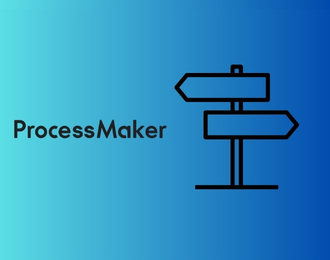Healthcare staff scheduling is one of the most critical components of managing a healthcare facility. From optimising workforce productivity to ensuring continuity of patient care, selecting the right software solution can make all the difference. In 2025, several software solutions will be offering robust features to streamline the scheduling process. In this guide, we will explore the top healthcare staff scheduling software and compare them, highlighting FlowForma’s unique advantages over the competition.
What Is Healthcare Staff Scheduling Software?
Healthcare staff scheduling software is a tool designed to manage and automate the scheduling of healthcare personnel. It helps ensure the right staff are available at the correct times, reducing administrative burdens and preventing scheduling conflicts.
These platforms facilitate easy shift assignments, holiday planning, and last-minute adjustments, which are essential in a dynamic healthcare environment.
Some software solutions come with features such as real-time communication, reporting tools, and integrations with other hospital systems, including HR and payroll, which ensure a seamless workflow.
Key Features of Healthcare Staff Scheduling Software
Managing healthcare staff schedules is a challenging task, but with the right software, it can be made much simpler and more efficient. Healthcare staff scheduling software provides a range of features that help reduce administrative tasks, enhance communication, and ensure compliance with industry regulations.
The experience of Blackpool Teaching Hospitals (BTH) NHS Foundation Trust, which successfully automated over 70 processes with FlowForma, showcases how the right tool can transform scheduling and administrative workflows across a public health system.
Here’s a closer look at the key features of these platforms:
1. Shift Scheduling
Healthcare staff scheduling software automatically assigns shifts based on staff availability, qualifications, and preferences. This reduces the manual effort involved in creating schedules and minimises errors. In fact, a study by McKinsey found that healthcare organisations leveraging AI in their scheduling processes have been able to reduce scheduling errors and improve operational efficiency.
2. Real-Time Communication & Cross-Department Coordination
Healthcare doesn’t run on fixed hours, and neither should communication. Software solutions must:
- Instantly notify staff about shift changes or emergencies
- Support multi-channel alerts via SMS, email, and in-app notifications
- Enable seamless coordination between HR, finance, and clinical departments
3. Mobile Accessibility and Self-Service Scheduling
In hospitals, nurses, doctors, and admin staff often need to view or adjust their schedules on the go. Leading platforms allow users to:
- Access shift calendars on mobile devices
- Request shift swaps or time off directly from their phone
- Receive push notifications for real-time updates
Mobile-first access was essential for Blackpool NHS teams spread across multiple locations, reducing friction and empowering staff ownership of their schedules.
4. Compliance Management and Governance
Regulatory compliance in healthcare scheduling is non-negotiable. Platforms must:
- Enforce working hour limits and mandatory breaks
- Prevent understaffing or double-booking
- Maintain audit trails for inspections
Blackpool NHS utilised FlowForma to develop workflows, including Clinical Safety Checks and Agency Spend Requests, which met Care Quality Commission expectations and internal governance requirements. The ability to assign user-level permissions in FlowForma was praised for simplifying data governance in a highly regulated NHS environment.
5. Seamless Integration with NHS Platforms (e.g., N365 & ESR)
Modern scheduling tools must work within the digital infrastructure of NHS trusts. That means:
- Integration with Microsoft 365/N365 environments
- Compatibility with the Electronic Staff Record (ESR) system
- Smooth data flow across payroll, HR, and scheduling systems
As an approved workflow vendor for the NHS’s shared N365 platform, FlowForma delivered exactly this. The Assignment Change form at BTH NHS, which passed through five departments, was a notable example of how deep integration can simplify administrative complexity.
6. Data-Driven Reporting and Staff Insights
Administrators benefit from built-in analytics that help them:
- Monitor overtime and absenteeism
- Optimise staffing ratios
- Forecast demand based on past trends
Such analytics were critical at BTH NHS, where decentralised departments previously lacked visibility into workflow delays. With FlowForma’s reporting capabilities, teams could identify bottlenecks and continuously improve their internal processes.
7. Empowerment Through No-Code Customisation
A unique advantage demonstrated in the Blackpool Teaching Hospitals NHS case study is FlowForma’s no-code process builder. It enables hospitals to:
- Quickly digitise scheduling-related workflows without IT bottlenecks
- Let process owners build and manage forms directly
- Scale solutions trust-wide while retaining departmental flexibility
Mark Greenwood, Senior Developer at BTH NHS, emphasised that involving process owners directly in building their workflows “was a game-changer” and helped democratise digital transformation across the NHS.
Top Healthcare Staff Scheduling Software in 2025
|
Tool |
Key features |
Pros |
Cons |
|
FlowForma |
No-code, automation, AI-powered process building, mobile accessibility |
Fast implementation, intuitive, seamless integration with Microsoft 365 |
Limited customizability for advanced users |
|
Allocate HealthRoster |
Automated rota management, integrated pay, and mobile accessibility |
Strong integration with existing hospital systems, real-time updates |
It can be expensive for smaller organizations |
|
Patchwork Health |
AI-driven scheduling, real-time updates, and team collaboration features |
Excellent for large hospitals, scalable |
Requires extensive setup for smaller teams |
|
Rotageek |
Real-time workforce optimization, self-service for staff |
Optimizes labour costs, improves scheduling accuracy |
Higher learning curve |
|
Quinyx |
Cloud-based, mobile access, compliance tracking |
Strong for shift management, easy for mobile use |
Not ideal for smaller institutions |
|
Deputy |
Easy drag-and-drop interface, compliance tracking |
Simple interface, easy to use |
Limited customization for large hospitals |
|
Zellis |
HR and payroll integration, shift management |
Scalable, easy integration with HR |
Complex to set up initially |
|
TeamUltim |
Real-time updates, integration with HR |
User-friendly, flexible |
Lacks advanced compliance features |
|
Smart Rota |
Auto-scheduling, reporting tools |
Efficient for small to mid-sized teams |
Lacks scalability for larger operations |
|
Workforce.com |
Compliance tracking, shift management, and a mobile app |
Real-time updates, mobile-friendly |
Limited customization for complex workflows |
Top Healthcare Staff Scheduling Software in 2025
1. FlowForma

FlowForma’s homepage
FlowForma provides a no-code, AI-powered process automation platform specifically designed for healthcare organisations. It enables the rapid digitalisation of processes, including staff scheduling, without requiring extensive IT resources.
Key Features
- AI Copilot: Assists in building workflows by interpreting user instructions or diagrams
- No-Code Automation: Allows users to automate processes without coding expertise
- Microsoft 365 Integration: Seamlessly integrates with tools like Teams and SharePoint
- Mobile Accessibility: Enables staff to manage schedules and requests on the go
Pros
- Rapid Implementation: Processes can be automated in a fraction of the time compared to traditional methods
- User-Friendly Interface: An intuitive design promotes ease of use across all departments
- Cost-Effective: Transparent pricing with no hidden fees
Cons
- Customisation Limitations: Highly specialised workflows may require additional customisation
2. Allocate HealthRoster

Allocate’s homepage
Allocate, previously HealthRoster, is a comprehensive rostering solution specifically designed for the healthcare sector, with a focus on compliance and efficiency.
Key Features
- Automated Rostering: Generates staff schedules based on predefined rules
- Compliance Monitoring: Tracks working hours to ensure adherence to regulations
- Mobile Access: Allows staff to view and manage their schedules remotely
Pros
- Robust Regulatory Tools: Helps organisations meet regulatory requirements
- Extensive Reporting: Provides detailed insights into staffing metrics
Cons
- Complex Setup: Initial configuration can be time-consuming
- Cost: May be more expensive compared to other solutions
3. Patchwork Health

Patchwork Health’s homepage
Patchwork Health specialises in digital rostering solutions, aiming to improve staff retention and reduce burnout.
Key Features
- Real-Time Updates: Provides instant notifications for shift changes
- Compliance Checks: Ensures schedules adhere to safe-working guidelines
Pros
- Enhanced Staff Autonomy: Empowers clinicians to have control over their schedules and workloads
- Improved Retention: Contributes to higher clinician satisfaction and retention
Cons
- Integration Challenges: May require additional effort to integrate with existing systems
4. Rotageek

Rotageek’s homepage
Rotageek offers an AI-driven workforce management platform that optimises scheduling based on demand forecasting.
Key Features
- AI Forecasting: Predicts labour demand to create optimal schedules
- Mobile Access: Enables staff to manage schedules via mobile devices
- Shift Swapping: Enables employees to swap shifts easily
Pros
- Data-Driven Decisions: Utilises AI to enhance scheduling accuracy
- Scalability: Suitable for organisations of various sizes
Cons
- Learning Curve: May require training to utilise advanced features fully
5. Quinyx

Quinyx’s homepage
Quinyx provides a cloud-based workforce management solution with a focus on employee engagement and compliance.
Key Features
- Scheduling Tools: Facilitates easy creation and sharing of schedules
- Compliance Alerts: Notifies managers of potential compliance issues
- Employee Engagement: Offers features to boost staff satisfaction
Pros
- User-Friendly Interface: An intuitive design enhances the user experience
- Comprehensive Features: Combines scheduling, compliance, and engagement tools
Cons
- Pricing: May be on the higher end for smaller organisations
6. Deputy

Deputy’s Homepage
Deputy is a workforce management platform that streamlines scheduling, time tracking, and employee communication, particularly in sectors such as healthcare, retail, and hospitality.
Key Features
- Automatic Rostering: Generates staff rotas based on availability, skillsets, and compliance requirements
- Timesheet Management: Tracks staff hours and integrates directly with payroll systems
- Mobile Application: Enables employees to manage shifts, request time off, and communicate with their team
- Compliance Tools: Ensures that rotas comply with labour laws, including breaks and overtime limits
Pros
- User-Friendly Interface: Simple to navigate, which enhances adoption
- Real-Time Notifications: Immediate alerts for shift changes and urgent updates
- Affordable for SMEs: Offers cost-effective plans suitable for small and medium-sized enterprises
Cons
- Limited Advanced Features: Lacks some of the more sophisticated AI-powered scheduling tools
- Customisation Limits: May not support highly tailored scheduling requirements
7. Zellis

Zellis’ homepage
Zellis is a human resources and payroll solution offering a wide range of functionalities, including staff scheduling, alongside its core HR services.
Key Features
- Advanced Scheduling: Enables efficient shift planning and real-time staff availability management
- Payroll Integration: Syncs schedules directly with payroll systems for accurate pay and compliance
- Mobile-Friendly: Allows staff to manage schedules and shift changes from their smartphones
- Compliance and Reporting: Ensures adherence to labour laws and generates audit-ready reports
Pros
- Integrated HR and Payroll: Streamlines processes across HR departments
- Flexible Scheduling: Easily adapts to changing staffing needs
Cons
- Complex Setup: Initial setup may be complicated for larger teams
- Price Point: May be costly for smaller healthcare providers
8. TeamUltim

TeamUltim’s homepage
TeamUltim is a versatile workforce scheduling solution designed to serve industries like healthcare by offering shift planning, communication, and regulatory tools.
Key Features
- Auto-Scheduling: Creates optimised rotas based on staff availability, skills, and demand
- Shift Swapping: Employees can request changes or offer their shifts to others
- Real-Time Updates: Notifies staff of scheduling changes, absenteeism, or urgent needs
- Employee Engagement: Features such as feedback and communication tools improve satisfaction
Pros
- High Flexibility: Allows rapid schedule changes, crucial in dynamic healthcare settings
- Employee-Centric Design: Focuses on improving the staff experience
Cons
- Lack of Advanced AI: Lacks automation depth compared to tools like FlowForma
- Interface Design: Some users report the interface as less intuitive
9. Smart Rota

Smart Rota’s homepage
Smart Rota is a cloud-based scheduling tool built to minimise manual scheduling tasks. It’s well-suited for smaller healthcare teams needing simplicity.
Key Features
- Shift Planning: Drag-and-drop functionality for quick rota creation
- Time Tracking: Monitors staff hours for accurate payroll processing
- Notifications: Sends shift reminders and updates via email or text
- Reporting: Generates reports for staffing efficiency and compliance
Pros
- Ease of Use: Minimal learning curve
- Affordable: Competitive pricing for smaller organisations
Cons
- Limited Customisation: May not support complex scheduling needs
- Basic Integration: Limited compatibility with broader hospital systems
10. Workforce.com

Workforce.com’s homepage
Workforce.com offers an extensive workforce management suite ideal for larger healthcare providers, including tools for scheduling, compliance, and analytics.
Key Features
- Automated Scheduling: Uses AI to optimise rotas based on availability and demand
- Workforce Analytics: Provides deep insights into staff performance and labour costs
- Compliance Management: Ensures legal compliance on breaks and overtime
- Mobile Access: Enables staff to view and manage schedules across devices
Pros
- AI-Powered Automation: Improves accuracy and reduces scheduling errors
- Scalable Platform: Fits healthcare organisations of all sizes
- Comprehensive Reporting: Detailed labour insights
Cons
- Complex Setup: May require significant implementation resources
- Higher Cost: Can be expensive for smaller providers
Make Staff Scheduling One Less Thing to Worry About with FlowForma
Managing healthcare staff schedules shouldn’t be a daily headache. The right software can save hours of admin time, reduce errors, and give your team the flexibility they need to deliver great care — without burning out.
If you’re looking for a tool that’s easy to use, quick to roll out, and built with healthcare in mind, FlowForma is well worth a look. It’s already helping NHS trusts and other healthcare providers get the best of what process automation has to offer. All without a single line of code.
Curious to see how it works? Book a free demo to see it in action or start your 7-day free trial and try it for yourself.
.png) By
By 




